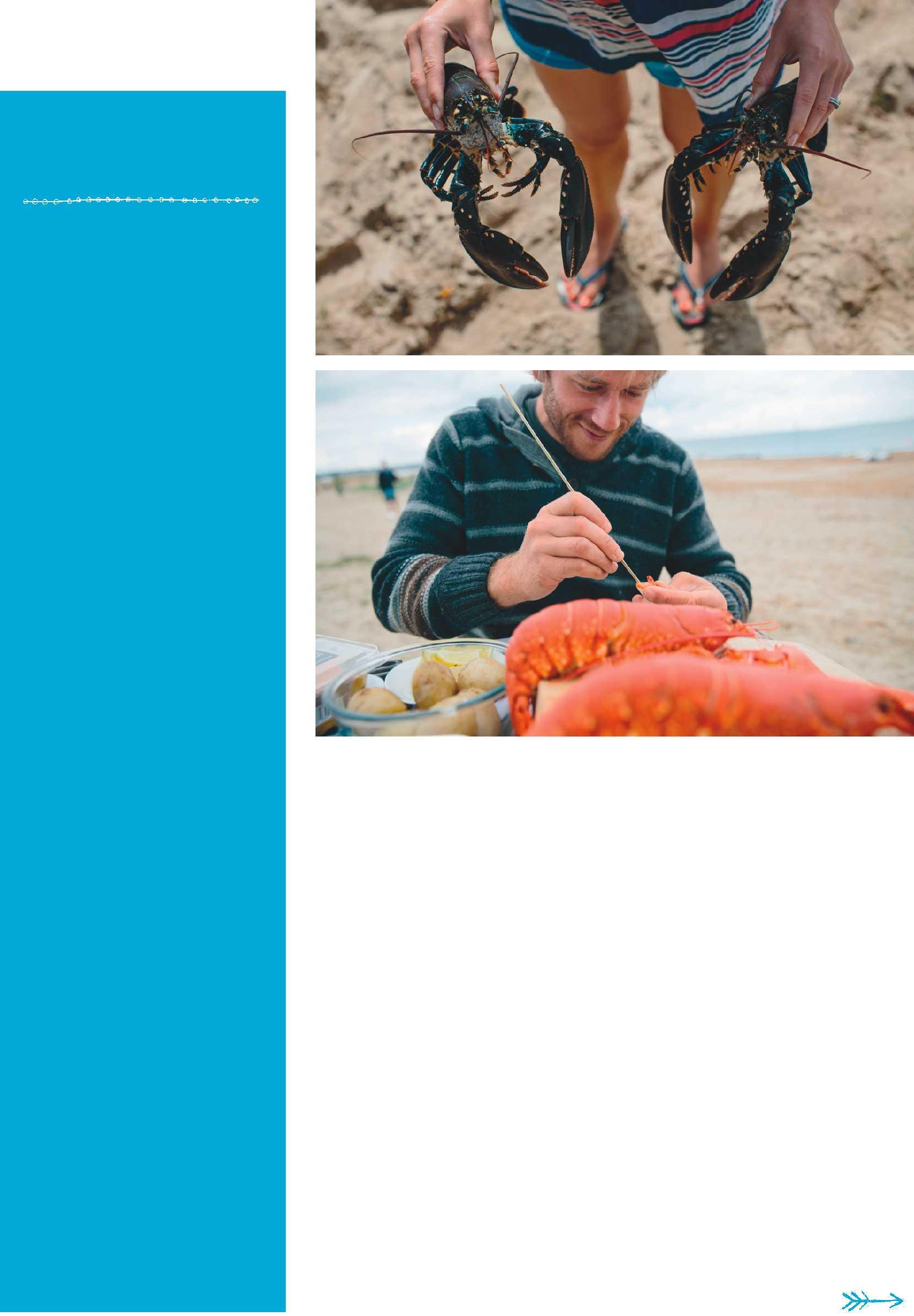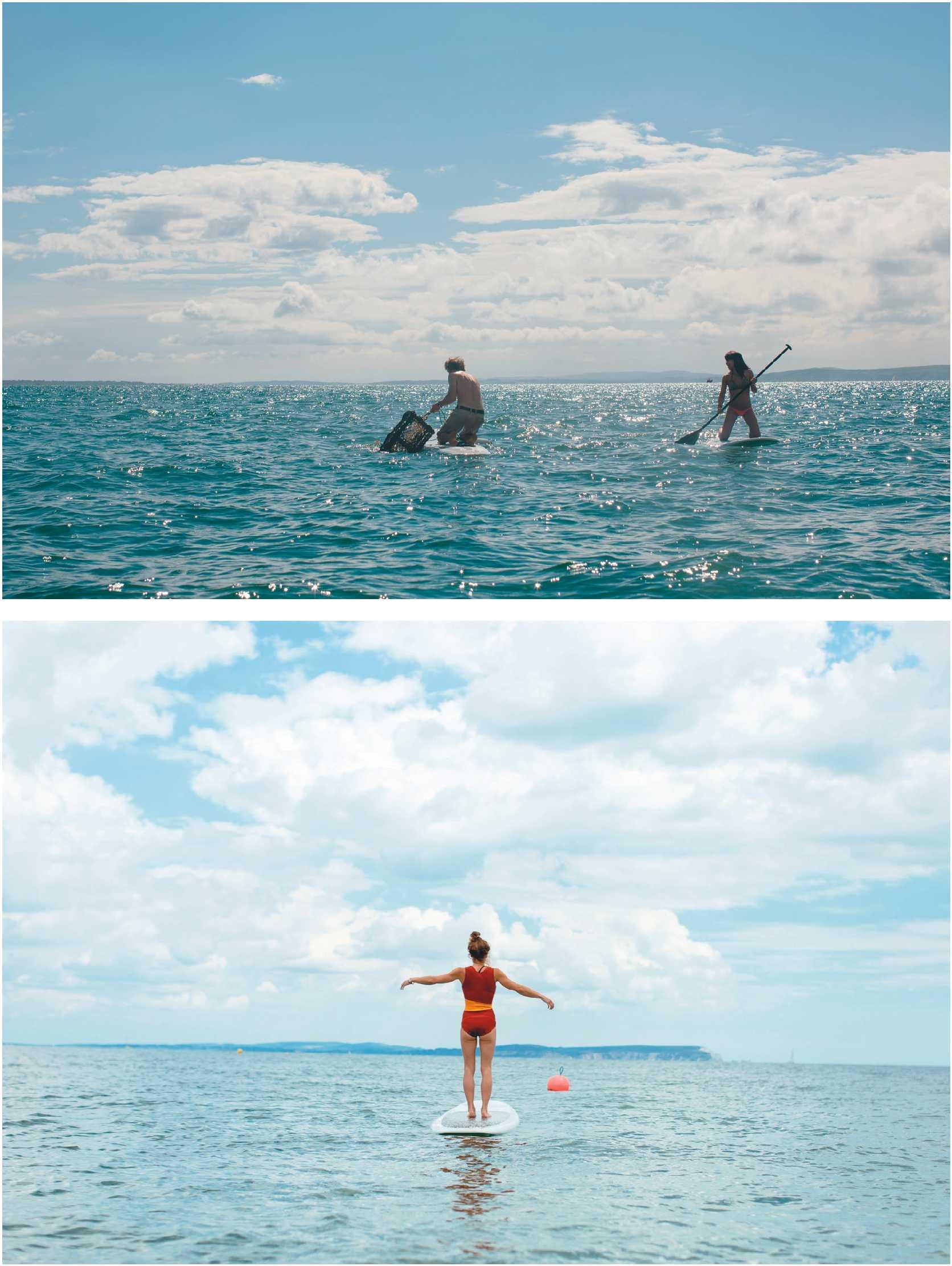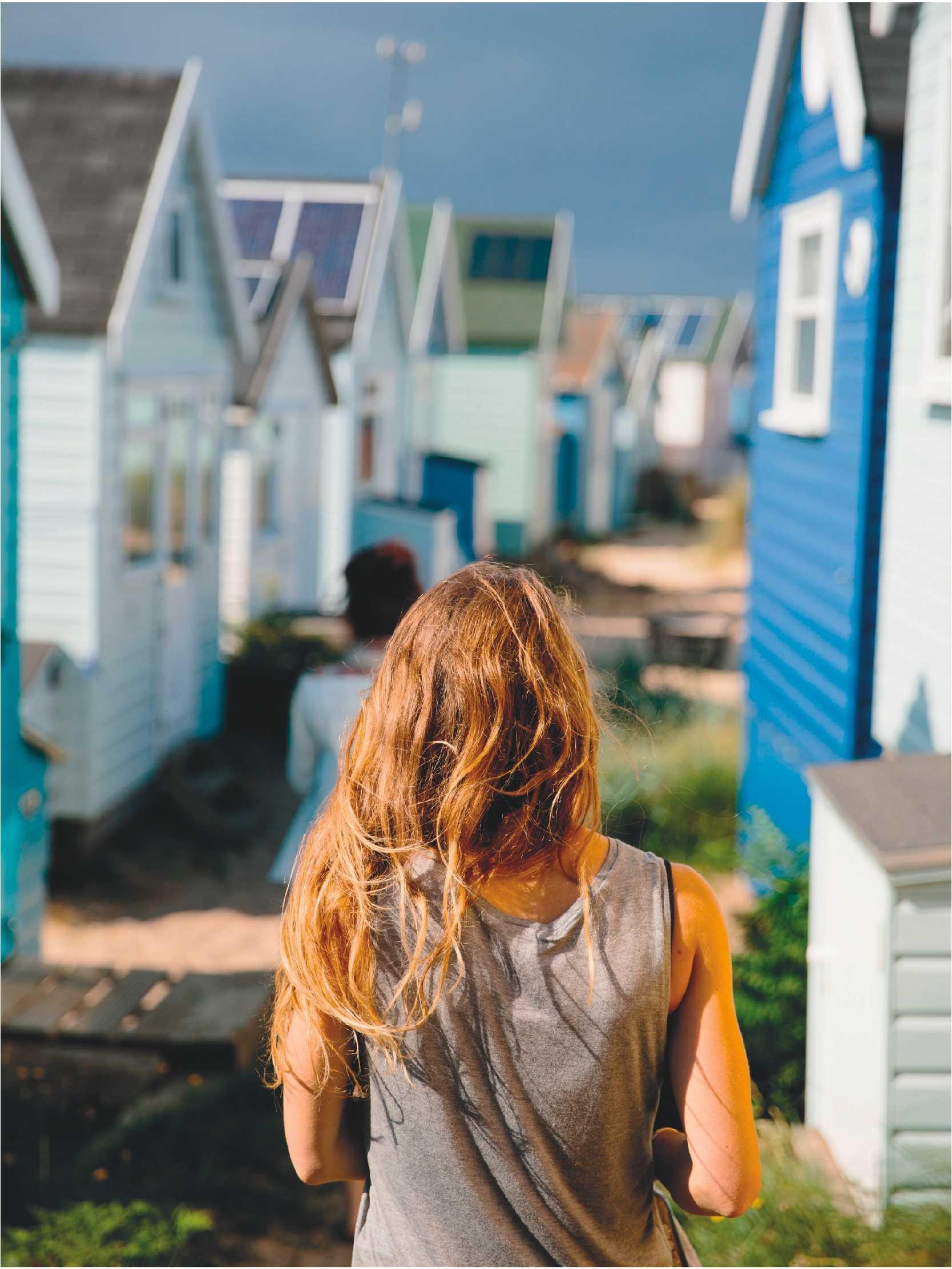
7 minute read
TRESCO Take to the water THE LIVING IS EASY
THE LIVING IS EASY
What could be better than a low-tech break, right on the beach with plenty of fresh seafood for the barbecue? It’s time to rediscover the simple pleasures of a beach-hut holiday
WORDS LUCY CLARKE PHOTOGRAPHS JAMES BOWDEN
Don’t get me wrong, I’m not immune to the charms of a holiday abroad – long, lazy days by the beach and balmy evenings – but one year recently, there was an extra factor to consider: I was quite heavily pregnant. As the idea of airport queues, narrow plane seats, and stifling transfer buses wasn’t appealing, I began to think of what we could do closer to home.
In Dorset, a stunning natural sandbank stretches between
Christchurch Harbour and the sea, and, perched along the length of it, are 346 brightly coloured beach huts. Most are well equipped with kitchen facilities, beds and a lounge area, but what makes them really special is that you’re allowed to sleep in them from March until
November. My family have owned one of these beach huts for 25 years. Growing up, I spent my summers there, crabbing, bodyboarding, playing Frisbee and beach rounders with friends. My parents, brother and I still live locally, so we congregate there on weekends for family barbecues. This is also where I met my husband, James. He owned the beach hut next to ours, so we grew up together – and spent our honeymoon at the beach hut.
So, after just a couple of phone calls, it was all arranged. We’d leave our passports at home and take our holiday in a hut that summer.

BACK TO BASICS
A mixed weather forecast lay in store for our week off: sunshine, rain, thunderstorms, wind – the full British spectacle. We packed our bags, with wet-weather clothes as well as swimwear, fishing rods, paddleboards, windsurfing kit, books, playing cards, and food.
Within an hour of shutting our front door, we were on the deck of the beach hut watching terns dive on the incoming tide. The magical simplicity of beach-hut living hits you immediately: laptops are left at home, phones are switched off, and the only traffic noise is the sound of kids wheeling by on skateboards, or the padding of flip-flops across the beach. Even though home was just down the road, watching the sun set over the water on that first night, we felt as if we were thousands of miles away from the demands of day-to-day life.
TOP FIVE BEACH-HUT TIPS
1Be prepared. Even if the weather doesn’t play ball, you can still have fun in and out of the water – so pack the wet-weather gear and wetsuits.
2Leave gadgets at home. Laptops and tablets don’t gel with sand. Get into the swing of hutting: light candles, get a stack of good books and board games out, and slow down.
3Enjoy the sea. If you love swimming, fishing, kayaking, paddleboarding, windsurfing, skimboarding, bodysurfing – bring your gear. Make sure that you’ve got life-jackets for children as the currents and tides around our coastline can be strong.

4Where possible, cook and eat outside. Beach-hut kitchens are basic. It’s all about the freshly caught mackerel sizzling on the barbecue, or the quick salad thrown together and eaten on a rug.
5Leave only footprints. Sweep out the sand, take your rubbish home with you to recycle, and leave the collected shells on the beach for someone else to discover...
ABOVE Enjoying the sea’s bounty TOP, RIGHT Checking the lobster pot BELOW, RIGHT Taking in the views to the Isle of Wight from Mudeford in Dorset
On our second day, we were joined by our friends, Hannah and Bowdy, who cycled from their home in nearby Southbourne. The wind arrived with them, so the men eagerly rigged up windsurfing kit and raced onto the water, spending hours sailing in front of the hut. By evening, the breeze had quietened to a murmur, so Hannah and I took our turn, paddleboarding happily as dusk settled over a brooding sea.
FISHING AND FORAGING
The next day, fresh mackerel was promised for the evening barbecue. James and Bowdy set off on the paddleboards with hand-lines, feathers and high hopes. Two hours later, they returned salt-soaked and grinning – but empty-handed. Luckily, we had back-up supplies for the barbecue, but overshadowing our plans, we noticed a dark weather front charging in from the east, bringing a foreboding bank of black cloud. It was a race against time to get the food cooked. But what we learned that night is that you can never outrun Mother Nature. The heavens opened halfway through the cooking, and we managed to get the barbecue lid on just in time. Our complaints didn’t last long though, as once the rain had passed, the sandbank looked washed clean in the shimmering light and, as we ate our meal, a beautiful rainbow stretched across the horizon.


ABOVE Feel a world away from home when you holiday in a beach hut – and if you
can’t holiday in one there are loads around the country to rent on a daily basis

After the unsuccessful fishing attempt, we decided to see if we’d fare any better with a lobster pot. Not owning a boat, James headed out with our lobster pot on the nose of his paddleboard – a tricky feat made even more ambitious by his decision to do it fully clothed.
Needless to say, there was much laughter from the rest of us when he fell in, only six feet from shore. But, not one to be defeated, he dragged himself back onto the board and paddled out with the pot, dropping it off a couple of hundred feet offshore, marking it with a buoy.

SURPRISED AT DAWN
The following morning we woke up early and paddled out to see if we’d had any luck. James hauled the pot onto his board and I whooped with delight to see two gleaming lobsters and a brown crab lurking inside. We decided to release the crab, but keep the lobsters for lunch.
We built a small fire of coals on the beach and set a pan of water on it to boil. The lobsters were killed as humanely as possible with an incision into their heads, before they were put into the pot. (If we’d had a freezer to hand, the best way would have been to freeze them first so that they become insensible, then make the incision. Never put live lobsters in a pot of boiling water.) We watched, amazed, as their iridescent blue shells turned to a rich red as they cooked. We ate on the beach with a fresh salad and hunks of bread, sucking the sweet meat from the claws – and feeling grateful to the sea for providing for us.
I discovered that one of my favourite times of day at the beach hut was dawn. Just before the rest of the world woke up, when the sun’s weak warmth was stretching across the sand, I’d slip out of bed with my notebook and pencil, and spend a few quiet moments writing.
As I sat on the shore on the final morning with the sun shimmering over the water, with the sound of the kettle being filled in the beach hut behind me, I honesty couldn’t imagine a better way to spend a holiday than in a hut on the sand.
Lucy Clarke is the author of The Blue and You Let Me In, both published by HarperCollins. Find out more at lucy-clarke.com.
WHERE TO RENT A HUT
There are more than 20,000 beach huts in the UK. Most are council-owned and can be rented for a day, a week or a season from as little as £10 per day. Here’s my top pick of the best places to rent a hut:
1Shaldon Beach Huts, Devon. For five-star luxury in a traditional seaside setting, you can rent one of these well-equipped little huts, from £125 per night (shaldonbeachhuts.co.uk).
2Studland Beach Huts, Dorset. These National Trust huts sit on the shore, or in the dunes, and cost from £15 per day, though you can’t sleep in them (national trust.org.uk/studland-beach/ things-to-see-and-do/ beach-huts).
3Fisherman’s Huts, Kent. Dating from 150 years ago, these converted huts in Whitstable start from £85 per night, including a full breakfast (whitstablefishermanshuts. com/our-huts).
4Mudeford Sandbank, Dorset. Some of these privately owned beach huts are available to rent on either a nightly or weekly basis. Expect to pay from at least £500 for a week (beachhuts 4hire.co.uk).







